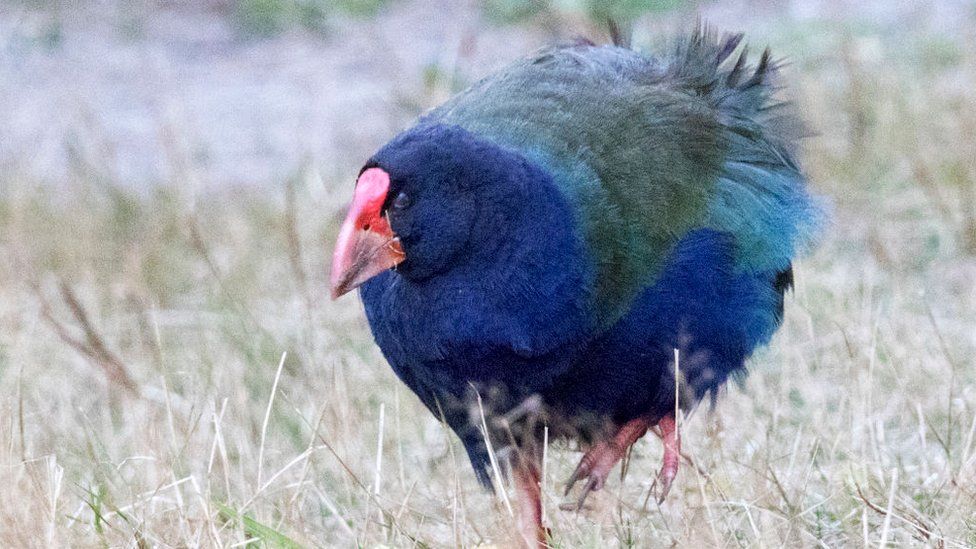Takahē : "prehistoric-looking" birds released into wild in New Zealand
- Published
- comments

These "prehistoric-looking" birds have just been successfully released back into the wild in New Zealand, and it's got people pretty excited!
The takahē are large, brightly-coloured, flightless birds who until fairly recently were thought to be extinct.
Now, 18 of the very rare birds have been released in Lake Whakatipu Waimāori valley in New Zealand, where they used to live, more than 100 years ago.
"There are few things more beautiful than to watch these large birds galloping back into tussock lands where they haven't walked for over a century." said Tā Tipene O'Regan, a rangatira (elder) of the Ngāi Tahu tribe, who own the lands where the birds live.
Takahē are some of the rarest birds in the world.
Their name comes from the Māori word 'takahi', meaning 'to stamp' or 'trample', due to their big feet and fast strides.
The birds - which have been around since the prehistoric Pleistocene era - were officially declared extinct in 1898.
This was due to things like hunting, and the arrival of invasive predators like stoats, cats, ferrets and rats, and deer who they competed with for food, who came with European settlers in the 19th Century.
Did you know?
Takahē are poo-lympians! Because they mostly eat plants, they have a very fibrous diet. This means that they can make around nine metres of poo each day!
After their rediscovery in 1948, conservationists began collecting and incubating eggs from wild takahē, to prevent them from being eaten by predators.
After they'd hatched, the conservationists fed and raised them wearing sock puppets to look like the birds' bright red beaks!
Years later, the birds were introduced to some island sanctuaries and national parks in New Zealand.
There are now thought to be around 500 takahē left in the world.
If all goes well with the 18 birds released into the wild in Lake Whakatipu Waimāori valley, it is hoped that another seven can be released in October, followed by 10 younger takahē early next year.
"After decades of hard work to increase the takahē population, it's rewarding to now be focusing on establishing more wild populations, but it comes with challenges - establishing new wild native species populations can take time and success is not guaranteed," said Deidre Vercoe, who works for the Department of Conservation.
- Published7 October 2020
- Published2 November 2021
